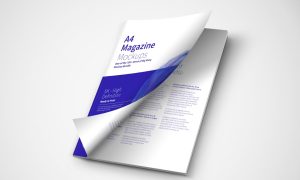Microstructure and mechanical properties of
heat-treated Ti–5Al–2Sn–2Zr–4Mo–4Cr
ریزساختار و خواص مکانیکی Ti-5Al -2Sn-2Zr-4Mo-4Cr عملیات حرارتی شده
ABSTRACT
The effects of heat treatment parameters on the microstructure, and mechanical properties and fractured morphology of Ti-5Al -2Sn-2Zr-4Mo-4Cr with the equiaxed, bi-modal and Widmanstätten microstructures were investigated. The heating temperatures for obtaining the equiaxed, bi-modal and Widmanstätten microstructures were 830, 890 and 920 °C, respectively, followed by furnace cooling at a holding time of 30 min. The volume fraction of primary α phase decreased with increasing the heating temperature, which was 45.8% at 830 °C, and decreased to 15.5% at 890 °C, and then the primary α phase disappeared at 920 °C during furnace cooling.
The variation of volume fraction of primary α phase in air cooling is similar to that in furnace cooling. The increase in heating temperature and furnace cooling benefited the precipitation and growth of the secondary α phase. The equiaxed microstructure exhibited excellent mechanical properties, in which the ultimate strength, yield strength, elongation and reduction in area were 1035 MPa, 1011 MPa, 20.8% and 58.7%, respectively.
The yield strength and elongation for the bi-modal microstructure were slightly lower than those of the equiaxed microstructure. The Widmanstätten microstructure exhibited poor ductility and low yield strength, while the ultimate strength reached 1078 MPa. The dimple fractured mechanism for the equiaxed and bi-modal microstructures proved excellent ductility. The coexistence of dimple and intercrystalline fractured mechanisms for the Widmanstätten microstructure resulted in the poor ductility.
![]() جهت دانلود رایگان نسخه لاتین این مقاله اینجا کلیک کنید .
جهت دانلود رایگان نسخه لاتین این مقاله اینجا کلیک کنید .

چکیده
اثرات پارامترهای عملیات حرارتی روی ریزساختار و خواص مکانیکی و مورفولوژی آلیاژ Ti-5Al -2Sn-2Zr-4Mo-4Cr با ریزسختارهای هم محور، دوجزئی (bi-modal) و ویدمن اشتاتن بررسی گردیدند. دماهای گرمایش برای بدست آوردن ساختارهای هم محور، دوجزئی و ویدمن اشتاتن به ترتیب عبارت بودند از °C 830، 890 و 920 که بدنبال آن خنک کاری در کوره در زمان نگهداری 30 دقیقه انجام شد. کسر حجمی فاز α ابتدایی با افزایش دمای گرمایش کاهش یافت. این مقدار در °C 830 معادل 45/8 درصد بود و در°C 890 به 15/5 درصد کاهش یافت و سپس در °C 920 در طول خنک کاری کوره، فاز α ابتدایی ناپدید شد.
تغییرات کسر حجمی α ابتدایی در خنک کاری در هوا مشابه با تغییرات موجود در خنک کاری کوره می باشد. افزایش دمای گرمایش و خنک کاری کوره موجب رسوب و رشد فاز ثانویه α بود. ریزساختار هم محور خواص مکانیکی فوق العاده ای نشان داد که در آن، استحکام نهایی، استحکام تسلیم، ازدیاد طول و کاهش سطح به ترتیب عبارت بودند از 20/8 درصد و 58/7 درصد.
استحکام تسلیم و ازدیاد طول مربوط به ریزساختار دوجزئی، اندکی کمتر از مقادیر مربوط به ریزساختار هم-محور بودند. ریزساختار ویدمن اشتاتن، داکتیلیته صعیف و استحکام تسلیم کمی از خود نشان داد در حالی که استحکام نهایی به MPa 1078 رسید. مکانیزم شکست دارای فرورفتگی (/dimpleدیمپل) مربوط به ریزساختارهای هم محور و دوجزئی، داکتیلیته عالی این ساختارها را ثابت نمود. وجود همزمان مکانیزم های شکست دیمپل و بین بلوری مربوط به ریزساختار ویدمن اشتاتن منجر به داکتیلته ضعیف در این ریزساختارها شد.
![]() جهت دانلود ترجمه تخصصی و فارسی این مقاله می توانید وجه آنرا پرداخت نموده و بلافاصله دریافت نمایید.
جهت دانلود ترجمه تخصصی و فارسی این مقاله می توانید وجه آنرا پرداخت نموده و بلافاصله دریافت نمایید.







نقد و بررسیها
هنوز بررسیای ثبت نشده است.